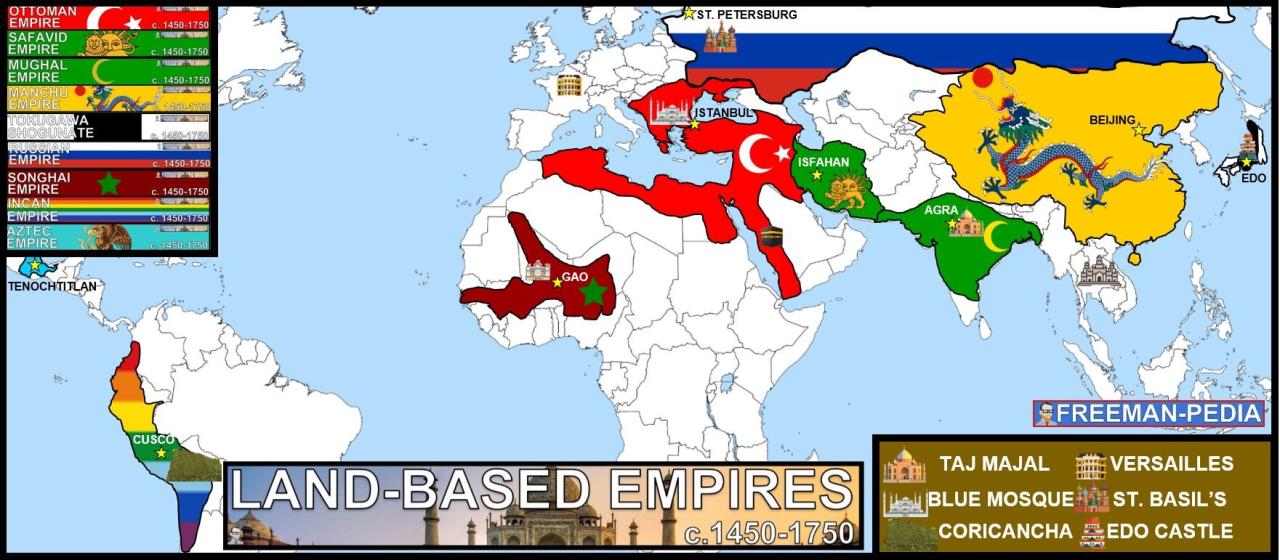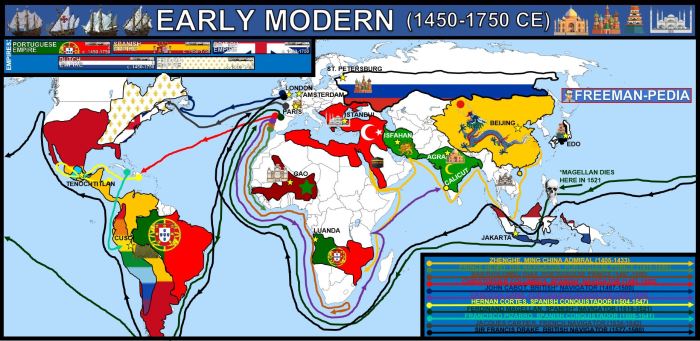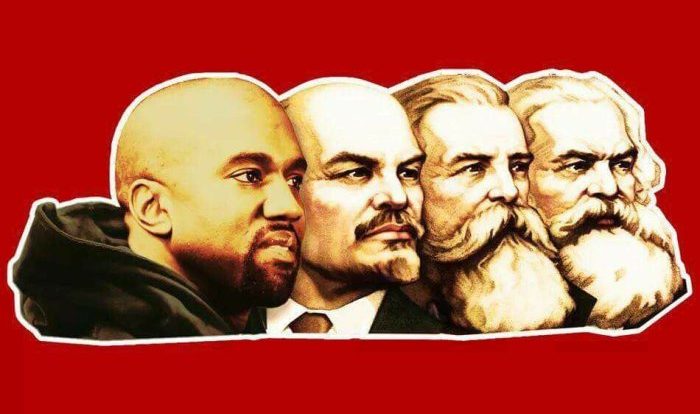The Unit 3 Land-Based Empires 1450 to 1750 Graphic Organizer provides an immersive exploration into the dynamic world of empires that shaped the course of history. From the vast expanse of the Ottoman Empire to the grandeur of the Mughal Empire, this graphic organizer unravels the intricate tapestry of these empires, their political structures, cultural influences, and global impact.
This comprehensive guide delves into the geographical scope, political systems, economic practices, cultural and religious influences, military strategies, technological advancements, trade networks, interactions, and conflicts that characterized these land-based empires. By examining their similarities and differences, we gain a deeper understanding of the complexities of empire-building and its profound impact on global history.
Land-Based Empires from 1450 to 1750

From 1450 to 1750, several powerful land-based empires emerged, shaping the political, economic, and cultural landscapes of their respective regions and beyond.
Major Land-Based Empires
- Ottoman Empire(1299-1922): Stretching across three continents, the Ottoman Empire was a formidable power that controlled vast territories in southeastern Europe, the Middle East, and North Africa.
- Safavid Empire(1501-1736): Founded in present-day Iran, the Safavid Empire was a Shia Muslim state that expanded its influence over much of Western Asia and the Caucasus.
- Mughal Empire(1526-1857): The Mughal Empire, established in India, was one of the largest and most prosperous empires in the world, known for its architectural marvels and cultural achievements.
- Ming Dynasty(1368-1644): The Ming Dynasty ruled China during a period of significant economic growth and cultural advancements.
- Russian Empire(1547-1917): The Russian Empire expanded rapidly during this period, becoming a major power in Eastern Europe and Asia.
Political and Economic Structures, Unit 3 land-based empires 1450 to 1750 graphic organizer
These empires employed various political and economic systems:
- Centralized Monarchies: Many empires, such as the Ottoman and Mughal Empires, were ruled by absolute monarchs who wielded immense power.
- Bureaucratic Administrations: Empires established complex bureaucratic systems to govern their vast territories, with officials appointed to specific roles and responsibilities.
- Agrarian Economies: Agriculture was the backbone of most empires, with landownership and taxation playing significant roles in their economic structures.
- Trade and Commerce: Empires fostered trade and commerce within their territories and beyond, with major trade routes connecting different regions.
Cultural and Religious Influences
Cultural and religious influences played a pivotal role in shaping these empires:
- Islamic Art and Architecture: The Ottoman and Safavid Empires were known for their exquisite Islamic art and architecture, blending elements from Persian, Byzantine, and Arab cultures.
- Hindu and Buddhist Influences: The Mughal Empire showcased a blend of Hindu and Islamic influences in its architecture, art, and literature.
- Confucianism in China: Confucianism shaped the social and political structures of the Ming Dynasty, emphasizing filial piety, respect for authority, and harmony.
- Orthodox Christianity in Russia: The Russian Empire was deeply influenced by Orthodox Christianity, which played a significant role in its cultural and political development.
FAQ Corner: Unit 3 Land-based Empires 1450 To 1750 Graphic Organizer
What were the major land-based empires during the period 1450 to 1750?
The major land-based empires during this period included the Ottoman Empire, the Mughal Empire, the Safavid Empire, and the Ming Dynasty.
How did these empires differ in their political structures?
The political structures of these empires varied significantly. The Ottoman Empire was a centralized monarchy, while the Mughal Empire was a decentralized empire with semi-autonomous provinces. The Safavid Empire was a theocratic state, and the Ming Dynasty was a bureaucratic empire.
What were the key cultural and religious influences that shaped these empires?
These empires were influenced by a variety of cultural and religious traditions. The Ottoman Empire was influenced by Islamic culture and religion, the Mughal Empire by Islamic and Hindu cultures, the Safavid Empire by Shia Islam, and the Ming Dynasty by Confucianism and Buddhism.


